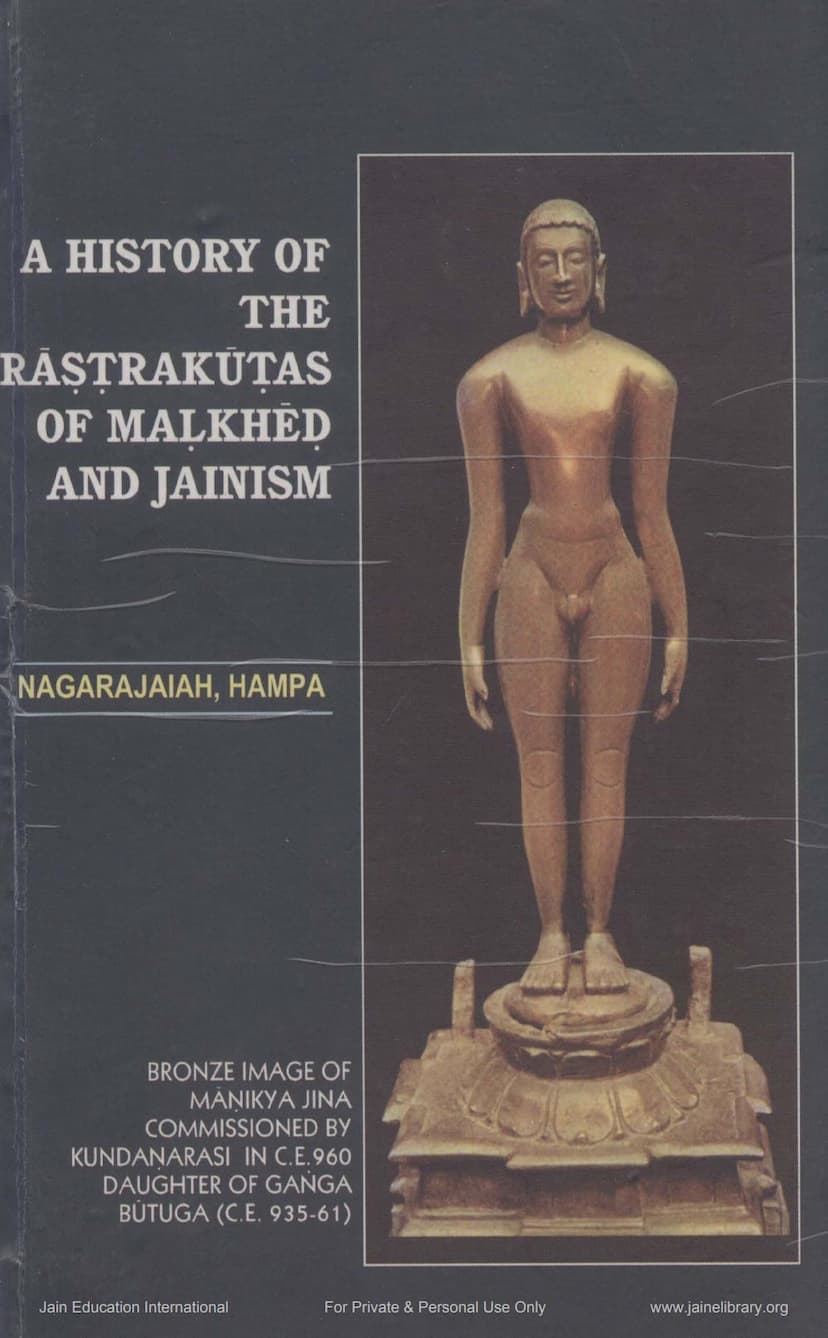History Of Rastrakutas Of Malkhed And Jainism
Added to library: September 1, 2025

Summary
This comprehensive book, "A History of the Rastrakutas of Malkhed and Jainism" by Prof. Nagarajaiah Hampa, delves into the intertwined history of the powerful Rastrakuta dynasty and the prominent role of Jainism during their reign in India.
The book meticulously details the origin, evolution, and imperial expansion of the Rastrakuta monarchs, highlighting their political and cultural influence across a vast territory spanning present-day Maharashtra and Karnataka, with extensions into Madhya Pradesh, Andhra Pradesh, and Tamil Nadu. It traces their rise from vassals of the Chalukyas of Badami to becoming one of India's greatest imperial dynasties, comparable to the Mauryas and Guptas.
A significant focus of the book is the profound and pervasive influence of Jainism during the Rastrakuta era. The author asserts that Jainism arguably held the status of a state religion during this period, evidenced by the substantial patronage extended by Rastrakuta rulers and their feudatories. The book explores:
- Royal Patronage: It highlights how various Rastrakuta monarchs, including Govinda-III and Amoghavarsha-I, actively supported and promoted Jainism, often influenced by their Jaina officials and family members. This patronage included the construction of numerous Jaina temples (basadis), monasteries, and the endowment of lands and resources for their sustenance.
- Jaina Sangha: The book elucidates the structure and activities of the Jaina Sangha, comprising monks, nuns, and lay votaries. It emphasizes the role of Jaina monasteries as centers of learning, where various subjects, including Jaina philosophy, grammar, literature, and even secular subjects like medicine and mathematics, were taught.
- Literature: A substantial portion of the book is dedicated to the flourishing of Jaina literature in Sanskrit, Prakrit, and Kannada during the Rastrakuta period. It discusses prominent Jaina authors like Virasena, Jinasena-II, Gunabhadra, Pampa, Ponna, and Puspadanta, detailing their significant contributions to theology, philosophy, poetry, grammar, and historical narratives. The book highlights how Jaina scholars played a crucial role in the development and enrichment of Kannada literature, adopting and adapting Sanskrit and Prakrit literary traditions.
- Art and Architecture: The author meticulously surveys the Jaina art and architectural achievements of the era, including the construction of temples, monolithic sculptures (like the famous Bahubali statue at Sravanabelagola), Mānastambhas, and intricate pillar designs. It highlights the distinct "Malnad style" of the Santaras and the grandeur of the rock-cut Jaina caves at Ellora, underscoring the fusion of local and imperial artistic influences.
- Feudatories and Jaina Influence: The book examines the significant role played by Rastrakuta feudatories, such as the Gangas, Callaketas, Rattas, and Santaras, who were often staunch followers of Jainism and contributed immensely to its propagation through temple building and literary endeavors.
- Prominent Jaina Figures: It delves into the lives and contributions of influential Jaina figures, including scholars, generals, ministers, and royal patrons like Camundaraya, Bankesa, Būtuga-II, Mārasimha-II, and the remarkable lady patron Attimabbe.
- Social and Cultural Impact: The book also touches upon the social and cultural impact of Jainism, noting the greater freedom and educational opportunities available to women within the Jaina community and the emphasis on non-violence and environmental consciousness.
Prof. Nagarajaiah Hampa, an acclaimed litterateur with extensive research in Jainology, draws upon a wide array of sources, including epigraphs, literary works, and archaeological findings, to present a comprehensive and well-researched account. The book's illustrations and detailed genealogical tables further enhance its value as a foundational text for understanding the historical and cultural landscape of the Rastrakuta period and the enduring legacy of Jainism in Karnataka and beyond.